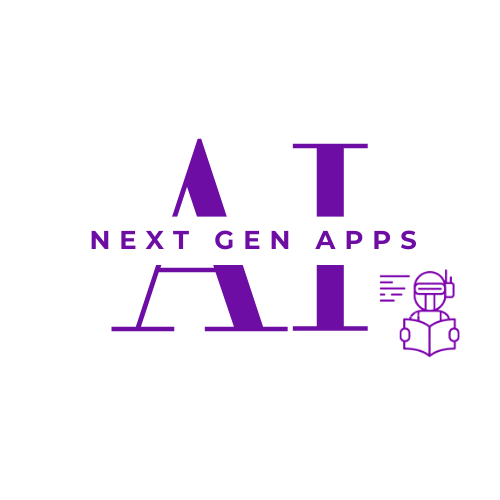The field of Artificial Intelligence is witnessing a surge in the development of intelligent agents – software programs capable of autonomous decision-making and interaction with their environment. These agents, often specialized in specific tasks, are transforming various industries by automating processes, enhancing decision-making, and facilitating complex interactions. But with the growing complexity of AI systems, managing and orchestrating multiple agents becomes a challenge. Enter Llama Agents, a powerful framework designed to streamline the creation, deployment, and management of multi-agent AI systems.
This blog post delves into the world of Llama Agents, exploring its structure, core features, and exciting use cases that are shaping the future of AI.

Table of Contents
ToggleDemystifying Llama Agents: A Framework for Multi-Agent AI Systems
Developed by LlamaIndex, Llama Agents stands out as a comprehensive framework designed specifically for building, iterating, and deploying multi-agent AI systems. It leverages an asynchronous (async-first) architecture, transforming individual AI agents into microservices. This approach allows for continuous operation and efficient processing of incoming tasks within a distributed network.
Here’s a breakdown of the key components within the Llama Agents structure:
- Agents as Microservices: Imagine each AI agent as a mini-expert, specializing in a specific task like data analysis, image recognition, or natural language processing. Llama Agents treats each agent as an independent microservice, promoting modularity and scalability.
- Central Control Plane: This acts as the brain of the operation, overseeing the entire network of agents. It tracks ongoing tasks, monitors services, and intelligently decides which agent or service is best suited to handle the next step in a complex task.
- Message Queue: Ensuring seamless communication between different agents is crucial. Llama Agents utilizes a message queue system, allowing agents to exchange information and coordinate their actions efficiently.
- Flexible Orchestration: Llama Agents offers two primary orchestration options. You can define explicit workflows for each task, or rely on the framework’s built-in “smart orchestrator” to make intelligent decisions based on real-time data and agent capabilities.
- Human-in-the-Loop Integration: Llama Agents recognizes the value of human oversight. It allows developers to integrate human interaction within the workflow, enabling humans to intervene when needed and guide the decision-making processes of the agents.
Core Features of Llama Agents: Simplifying Complex Multi-Agent Systems
The innovative architecture of Llama Agents translates into several compelling features that simplify the development and management of multi-agent AI systems:
- Distributed Architecture: By treating agents as microservices, Llama Agents fosters a distributed architecture. This promotes modularity, fault tolerance, and easier scaling of the system as needed.
- Standardized Communication: The central control plane and message queue system ensure clear and consistent communication between agents, regardless of their specific functionalities.
- Flexible Orchestration: The dual orchestration options cater to various needs. Developers can define workflows for complete control, or leverage the smart orchestrator for dynamic task allocation and improved efficiency.
- Easy Deployment: Llama Agents streamlines the deployment process, making it easier to launch, scale, and monitor multiple agents within the system.
- Scalable Performance: The framework comes equipped with comprehensive observability tools, allowing developers to monitor system and agent performance, identify bottlenecks, and optimize resource allocation effectively.

Unleashing Potential: Use Cases for Llama Agents
The power of Llama Agents lies in its ability to address various real-world challenges across diverse industries. Here are some exciting use cases that showcase the transformative potential of this framework:
- Smart Cities: Imagine a city where traffic lights adapt to real-time traffic flow, coordinated by a network of agents that collect and analyze data from sensors, cameras, and other sources. Llama Agents can facilitate such intelligent infrastructure, optimizing traffic flow, reducing congestion, and improving overall city management.
- Medical Diagnosis: A team of AI agents, each specializing in analyzing different types of medical data, can collaborate seamlessly within a Llama Agent framework. This can expedite diagnosis, improve accuracy, and provide valuable insights for medical professionals.
- Personalized Learning: AI agents can tailor educational experiences for individual students, adapting to their learning styles and pace. Llama Agents can orchestrate this process, enabling communication between agents specializing in different subject areas, assessment tools, and content delivery platforms.
- Fraud Detection: Financial institutions can leverage Llama Agents to build robust fraud detection systems. A network of agents can analyze transactions, identify suspicious patterns, and trigger human intervention when necessary, leading to enhanced security and reduced financial losses.
- Scientific Research: Llama Agents can empower researchers by automating tedious tasks like data analysis and model training. Different agents can collaborate, share findings, and explore various research avenues efficiently, accelerating scientific progress.

Beyond the Basics: Advanced Features of Llama Agents
- Integration with External Tools: Llama Agents seamlessly integrates with various external tools and APIs. This allows agents to leverage existing services and functionalities, expanding their capabilities and enriching the overall workflow.
- Data Security and Privacy: As AI systems handle sensitive data, security is paramount. Llama Agents incorporates robust security features to ensure data privacy and compliance with relevant regulations.
- Continuous Learning and Improvement: The framework promotes an iterative development approach. Agents can be continuously updated with new data and improved algorithms, allowing them to learn and adapt over time, enhancing their accuracy and effectiveness.
Building with Confidence: Benefits of Using Llama Agents
By choosing Llama Agents for your multi-agent AI project, you can enjoy a multitude of benefits:
- Reduced Development Time: The framework provides pre-built components and simplifies communication protocols, significantly reducing development time compared to building a multi-agent system from scratch.
- Improved Efficiency: Llama Agents optimizes resource allocation and task execution, leading to accelerated processing and improved overall efficiency.
- Scalability and Flexibility: The modular architecture enables easy scaling of the system as your needs evolve. Additionally, the framework offers flexibility in terms of orchestration and integration with external tools.
- Cost-Effectiveness: By streamlining development and promoting efficient resource utilization, Llama Agents can contribute to significant cost savings in the long run.
A Glimpse into the Future: The Evolving Landscape of Llama Agents
The development of Llama Agents is an ongoing process. Here’s a glimpse into some exciting advancements on the horizon:
- Enhanced Explainability: The ability of AI agents to explain their reasoning and decision-making processes is crucial for building trust and transparency. Future iterations of Llama Agents might incorporate advanced explainability techniques to shed light on the rationale behind agent actions.
- Decentralized Orchestration: The current centralized control plane could potentially evolve towards a more decentralized architecture, empowering individual agents to make more autonomous decisions within predefined boundaries.
- Integration with Blockchain Technology: The secure and transparent nature of blockchain technology could be harnessed to further enhance data security and trust within Llama Agent systems.

Conclusion: Llama Agents – A Stepping Stone to Intelligent Collaboration
The innovative framework of Llama Agents offers a compelling solution for building and managing complex multi-agent AI systems. By leveraging its distributed architecture, standardized communication, and flexible orchestration capabilities, developers can streamline development, optimize performance, and unlock the immense potential of collaborative AI. As Llama Agents continues to evolve, we can expect even more exciting possibilities that will shape the future of intelligent automation and human-AI collaboration.
FAQs (Frequently Asked Questions)
Llama Agents offer several advantages, including:
- Reduced development time: Pre-built components and standardized communication protocols streamline development.
- Improved efficiency: Optimized resource allocation and task execution lead to faster processing.
- Scalability and flexibility: The modular architecture allows for easy scaling and integration with external tools.
- Cost-effectiveness: Streamlined development and efficient resource utilization contribute to cost savings.
Llama Agents are not limited to a specific type of AI agent. The framework can integrate various agents specializing in different tasks, such as natural language processing, image recognition, or data analysis.
Llama Agents prioritize data security by incorporating robust security features. These features ensure data privacy and compliance with relevant regulations.
While some technical expertise is beneficial, Llama Agents aim to simplify multi-agent AI development. The framework offers clear documentation and resources to help developers get started.
Several resources can help you delve deeper into Llama Agents. The official LlamaIndex website likely offers documentation, tutorials, and potentially even case studies showcasing successful implementations. Additionally, searching online for articles, blog posts, or forums related to Llama Agents can provide valuable insights from the developer community.
